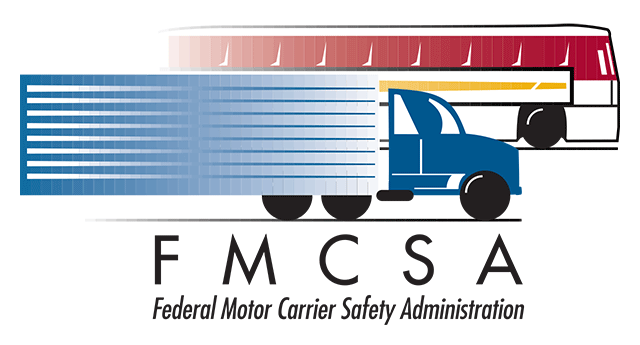By Tom Bray
 Vehicles designed to carry multiple passengers—not to mention the business models behind their operation—come in all shapes and sizes, from limousines and small private vans used to shuttle employees, to modern 60-passenger, for-hire luxury coaches. In conjunction with the diversity of the vehicles, there are passenger vehicle safety regulations that apply to operations from small private church groups to large tour operators—with certain exceptions.
Vehicles designed to carry multiple passengers—not to mention the business models behind their operation—come in all shapes and sizes, from limousines and small private vans used to shuttle employees, to modern 60-passenger, for-hire luxury coaches. In conjunction with the diversity of the vehicles, there are passenger vehicle safety regulations that apply to operations from small private church groups to large tour operators—with certain exceptions.
Given the wide range of passenger vehicles, it is essential to know which Federal Motor Carrier Safety Regulations (FMCSRs) apply to your operation. Differentiating the appropriate regulations can help your organization:
• Avoid violations and costly fines
• Lower your Compliance, Safety, and Accountability (CSA) Behavioral Analysis and Safety Improvement Category (BASIC) scores
 • Reduce roadside inspections and the chance of a compliance review
• Reduce roadside inspections and the chance of a compliance review
• Minimize the cost of insurance
• Increase your customers’ confidence in you as a safe operator
There are four key questions to help determine which regulations apply to your operation and clarify the difference between direct, indirect, and no compensation. Also provided is an easy-to-use table that allows you to apply your answers to the questions to determine the applicable regulations. Keep in mind that in-state-only operations are governed at the state and local level, where requirements may vary.
To determine what federal regulations apply to your operation, start by answering these four questions:
 1. Is your transportation service a for-hire operation?
1. Is your transportation service a for-hire operation?
For-hire motor carriers provide transportation for passengers in exchange for some sort of compensation. Examples of for-hire passenger transportation include limousine services, charter bus services, canoe-rental bus services, and hotel shuttles.
According to the Federal Motor Carrier Safety Administration (FMCSA), the following factors need to be present before a motor carrier of passengers is classified as a for-hire carrier at the federal level:
• The motor carrier provides interstate transportation of passengers for a commercial purpose
• The motor carrier is compensated, either directly or indirectly, for the transportation service provided
• The transportation service is generally available to the public at large
2. How many passengers are each of your vehicles designed to carry?
For regulatory purposes, the passenger count is based on the manufacturer’s designed passenger capacity or actual passengers, including the chauffeur. Removing seats from a vehicle does not generally affect the applicable regulations.
3. What is the gross vehicle weight rating or actual weight of each vehicle?
Regulations apply to passenger-carrying vehicles based on:
• The vehicle’s gross vehicle weight rating (GVWR), usually found on the manufacturer’s plate inside the driver-side door
• The actual weight of the vehicle when fully loaded with passengers, fuel, and luggage
 4. What type of compensation do you receive for the transportation provided?
4. What type of compensation do you receive for the transportation provided?
An example of direct compensation is when passengers buy tickets specifically for transportation to a destination, such as a sporting event or city that is not part of a package deal.
On the other hand, examples of indirect compensation are bus tour groups and rafting trips with package rates, as well as assisted living facilities, with general fees or assessments for various services, including transportation.
In some cases, passengers pay no compensation, directly or indirectly. Passenger-carrying vehicles less than 10,001 pounds and designed to carry 9 to 15 passengers with no compensation are excluded from the definition of a commercial motor vehicle (CMV) in Section 390.5. Since these vehicles are not considered CMVs, these vehicles and the chauffeurs are exempt from the FMCSRs. Two examples of no compensation is when a company transports employees without collecting fees from the employees and when a private school pays for student or faculty transportation exclusively with the school’s general budget.
Which regulations apply to my vehicles based on the four key questions?
After answering the four questions for each group of similar vehicles in your operation, refer to the following table for generally applicable regulations:
| Passenger Capacity | Vehicle Weight or Rating | Compensation Type | Applicability of FMCSRs |
| 8 or fewer passengers | 10,000 pounds or less, including any trailer | Any type | Not subject to FMCSRs |
| 8 or fewer passengers | 10,000 pounds or less, including any trailer | Any type | Subject to all FMCSRs based on weight of vehicle. Commercial driver’s license (CDL) and drug and alcohol testing rules do not apply if weight remains less than 26,001 pounds. |
| 9 to 15 | Any weight | Direct | Subject to all FMCSRs, including rules for insurance, driver qualification, hours of service, and vehicle maintenance and inspection. CDL and drug and alcohol testing rules do not apply if weight remains less than 26,001 pounds. |
| 9 to 15 | 10,000 pounds or less, including any trailer | Indirect | Exempt from the FMCSRs, but must keep an accident register, obtain a USDOT number and mark it on the vehicle, and comply with the prohibitions on texting and the use of hand-held mobile phones. See Sec. 390.3(f)(6). |
| 9 to 15 | 10,001 pounds or more, including any trailer | Indirect | Subject to all FMCSRs based on weight of vehicle. CDL and drug and alcohol testing rules do not apply if weight remains less than 26,001 pounds. |
| 9 to 15 | Less than 10,001 | None | Vehicles and drivers are not subject to FMCSRs (e.g., company-owned vehicles with transportation provided to employees at no charge). |
| 16 or more | Any weight | Any type; | Subject to all FMCSRs, including rules for CDL licensing, drug and alcohol testing, insurance, driver qualification, hours of service, and vehicle maintenance and inspection. |
What should I do if we aren’t in compliance?
First, don’t panic.
 Next, it may be very beneficial to have a regulatory expert, either internal or through a third-party, conduct a six-factor mock audit to simulate an FMCSA compliance review. A time-specific action plan should be developed based on the mock audit results. Assign accountability for each action item and conduct frequent follow-up meetings until all compliance issues are resolved.
Next, it may be very beneficial to have a regulatory expert, either internal or through a third-party, conduct a six-factor mock audit to simulate an FMCSA compliance review. A time-specific action plan should be developed based on the mock audit results. Assign accountability for each action item and conduct frequent follow-up meetings until all compliance issues are resolved.
The FMCSA expects to see timely and meaningful action to resolve the gaps in your safety management controls, also known as your policies and procedures. Ultimately, the return on investment of the mock audit may mean fewer roadside inspections, reduction of operating costs, and the protection of your company’s reputation and viability.
[CD0719]
Tom Bray is an industry consultant on transportation at J.J. Keller & Associates. He can be reached at tbray@jjkeller.com.

